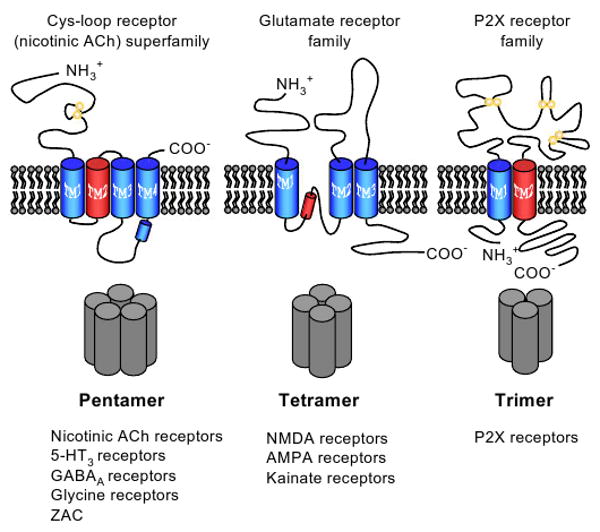Fig. 1.

Schematic representation of the three structural categories of ligand-gated ion channel subunit. The pentameric Cys-loop receptor superfamily comprises the nicotinic acetylcholine (ACh) receptors, 5-hydroxytryptamine3 (5-HT3) and a zinc-activated channel that form cation selective ion channels and the γ-aminobutyric acidA and strychnine-sensitive glycine receptors that conduct anions. The tetrameric ionotropic glutamate receptors are subdivided into N-methyl-d-aspartate (NMDA), α-amino-3-hydroxy-5-methyl-4-isoxazole propionic acid (AMPA) and kainate receptor subfamilies. The highly schematic topography of each receptor category indicates the locations of the extracellular and intracellular termini, the number of transmembrane spans (large colored cylinders), and cysteine residues participating in disulphide bond formation (yellow circles). Red cylinders indicate α-helical regions participating in ion conduction/selectivity.
